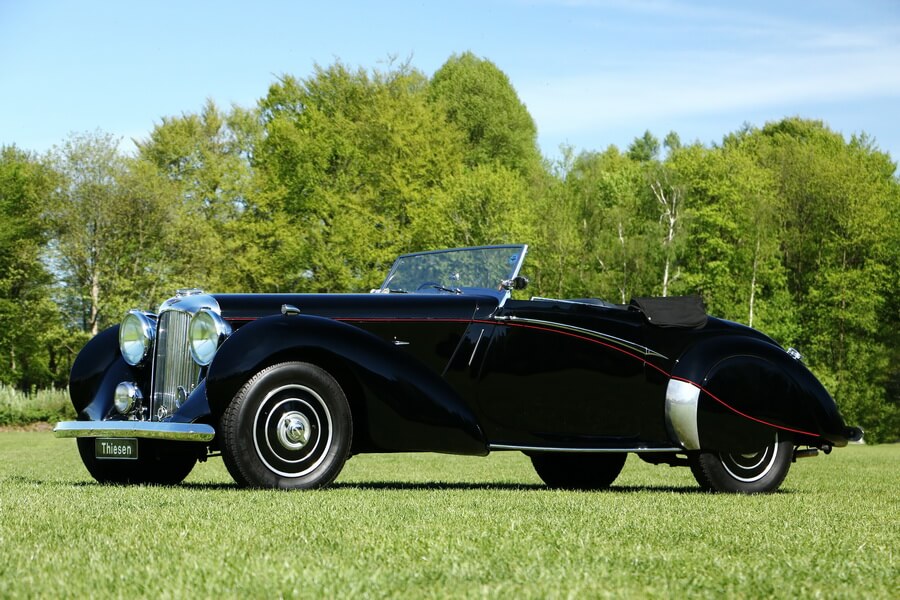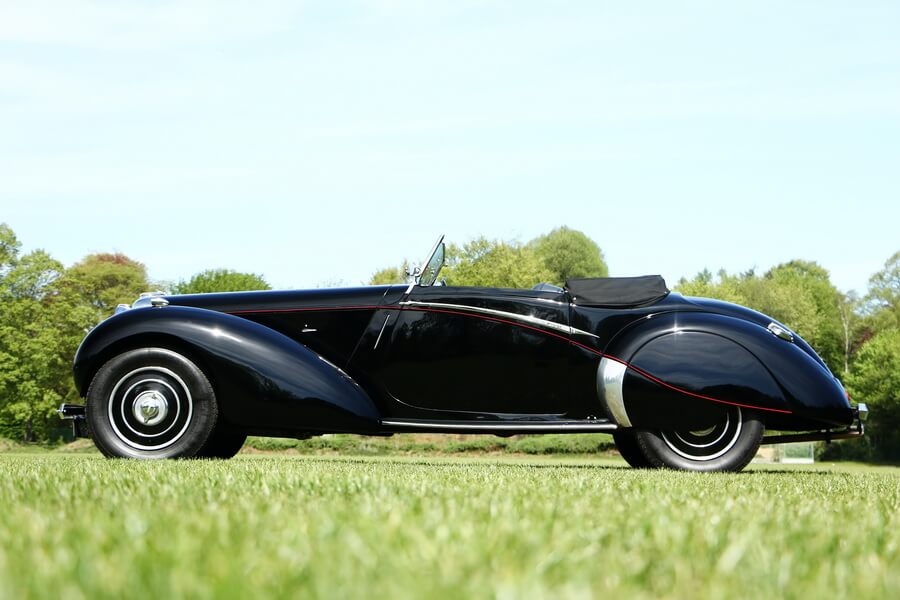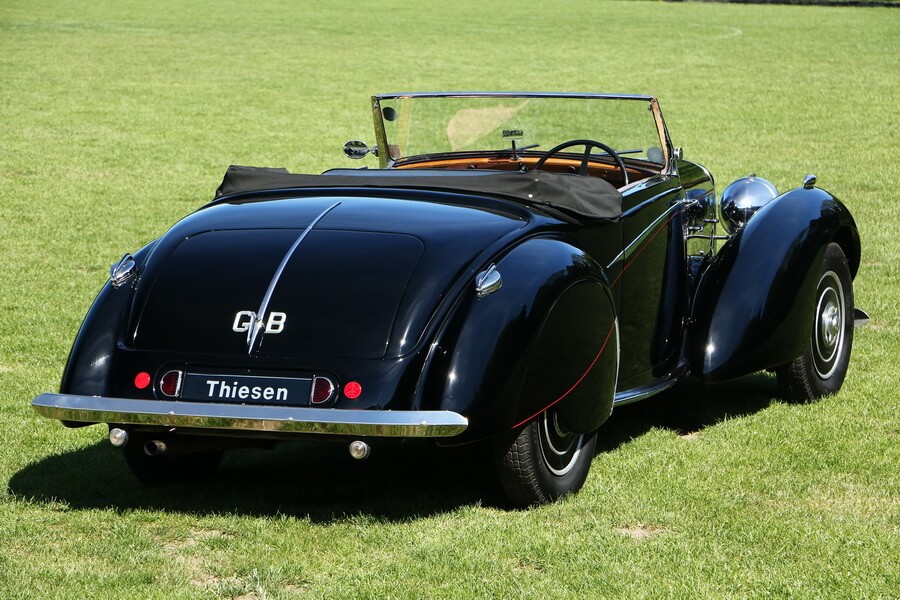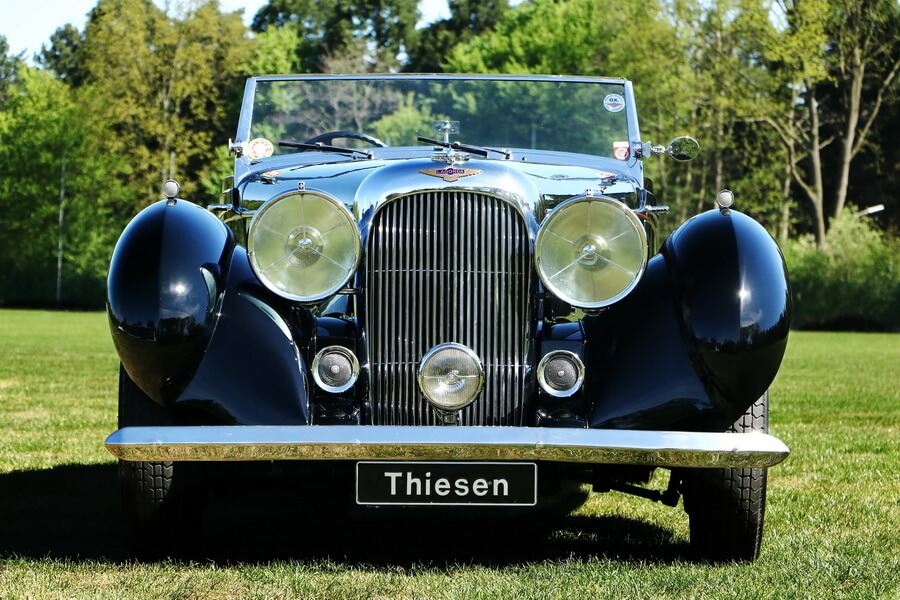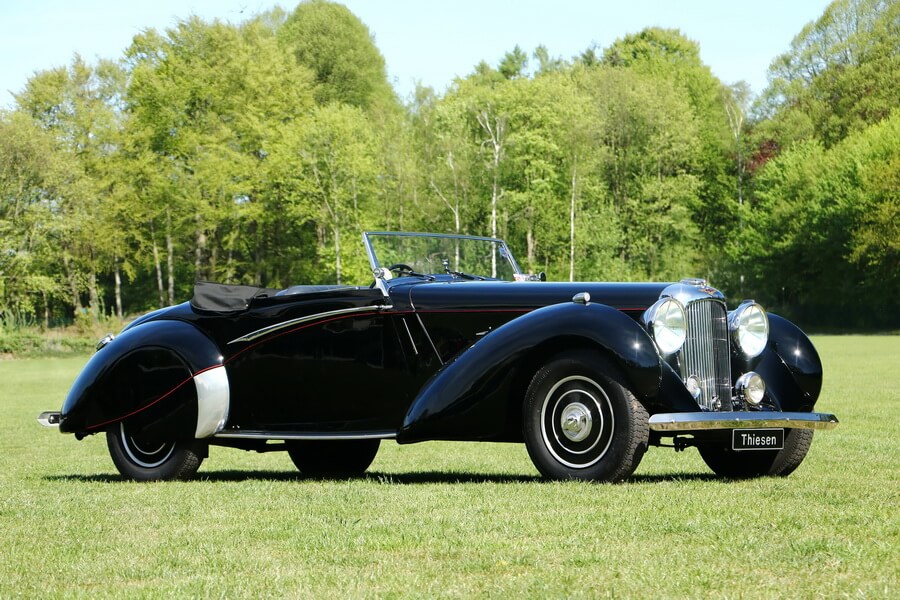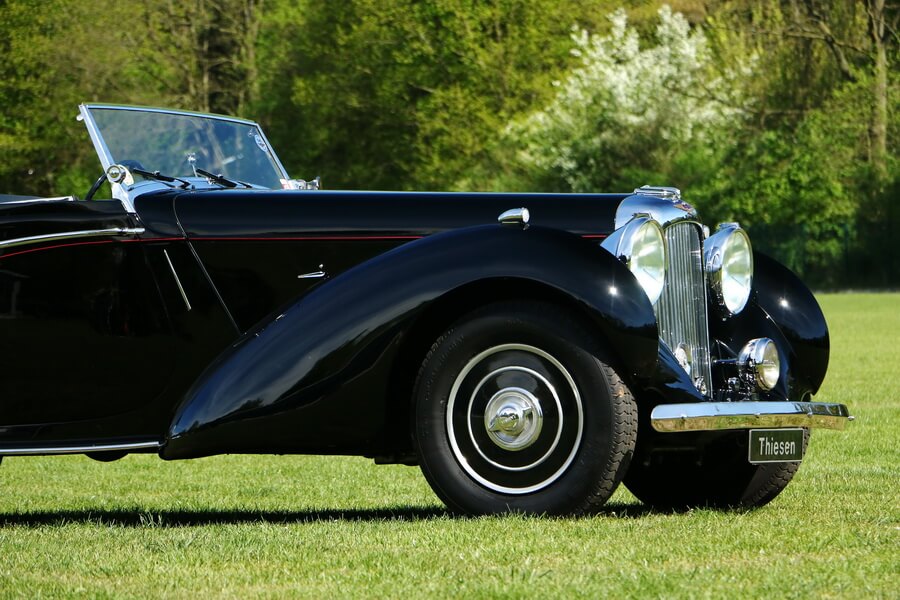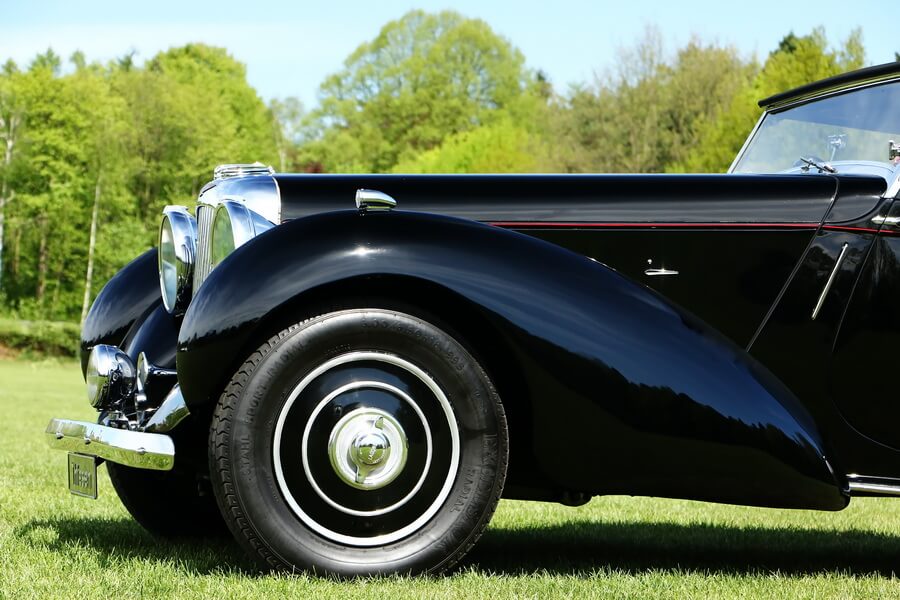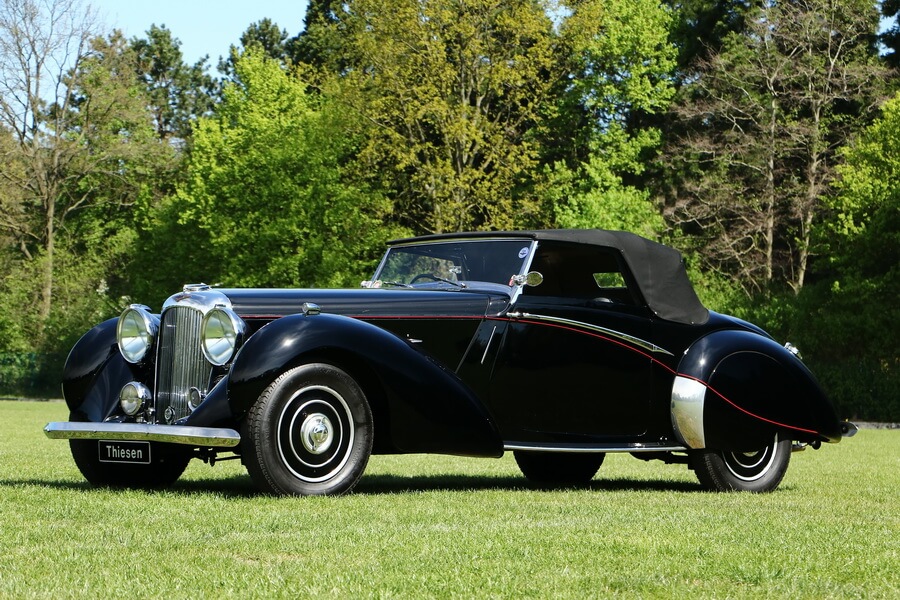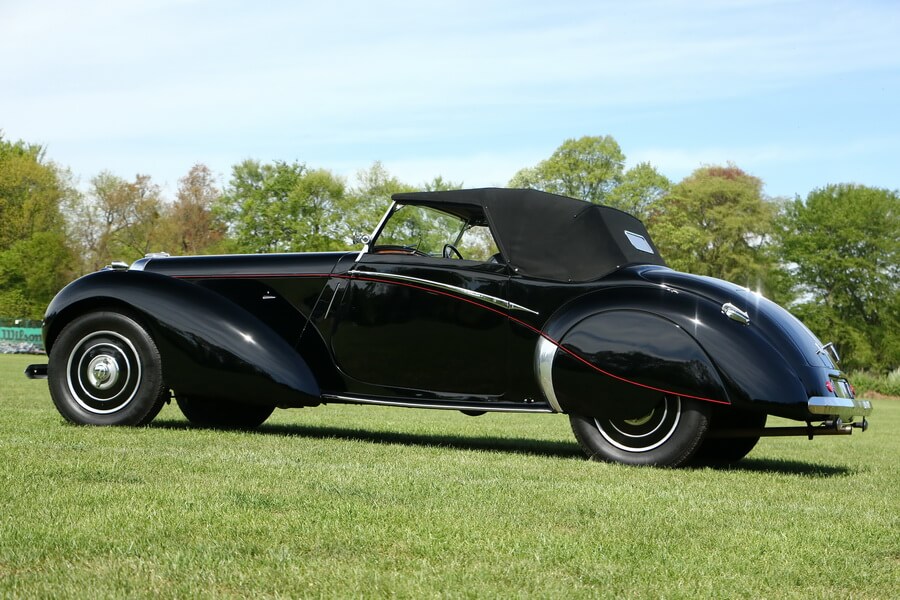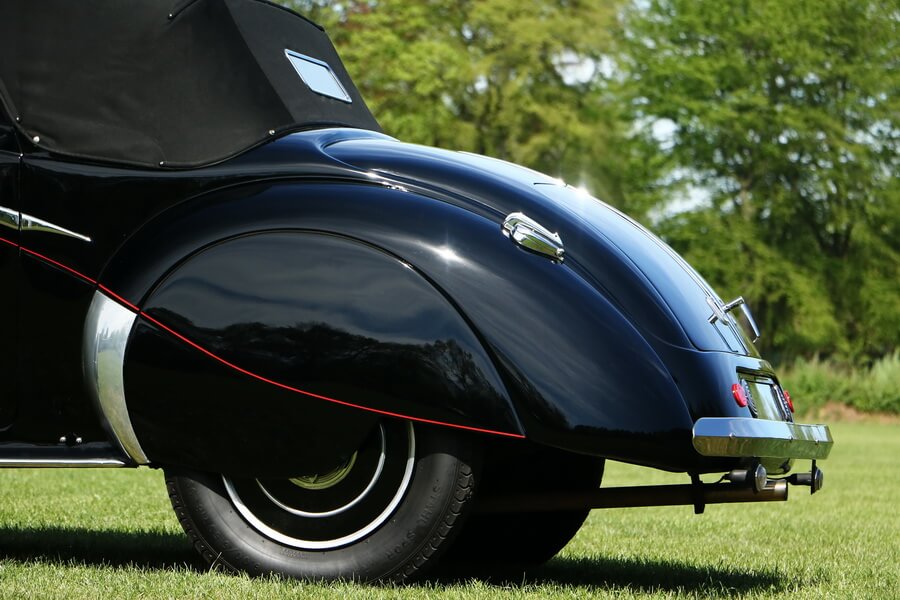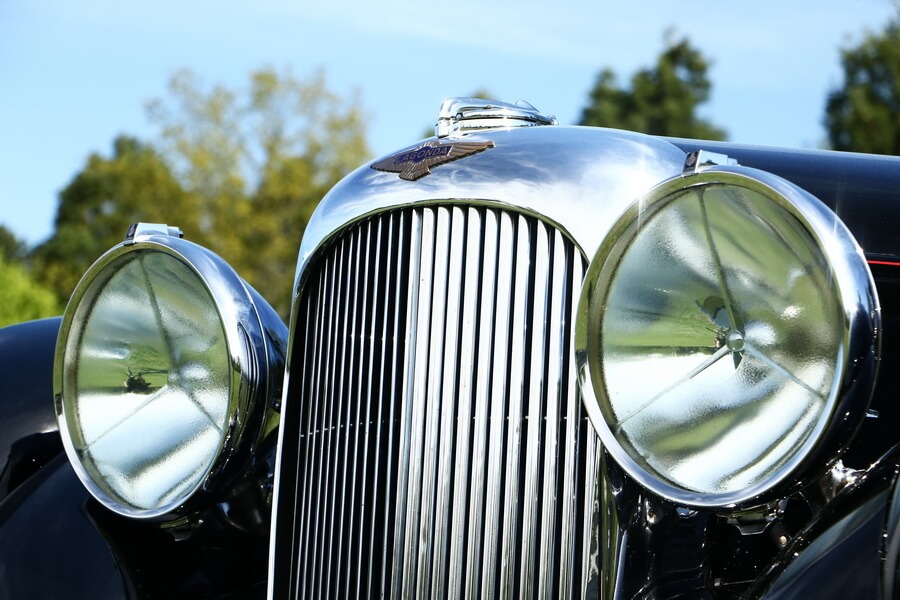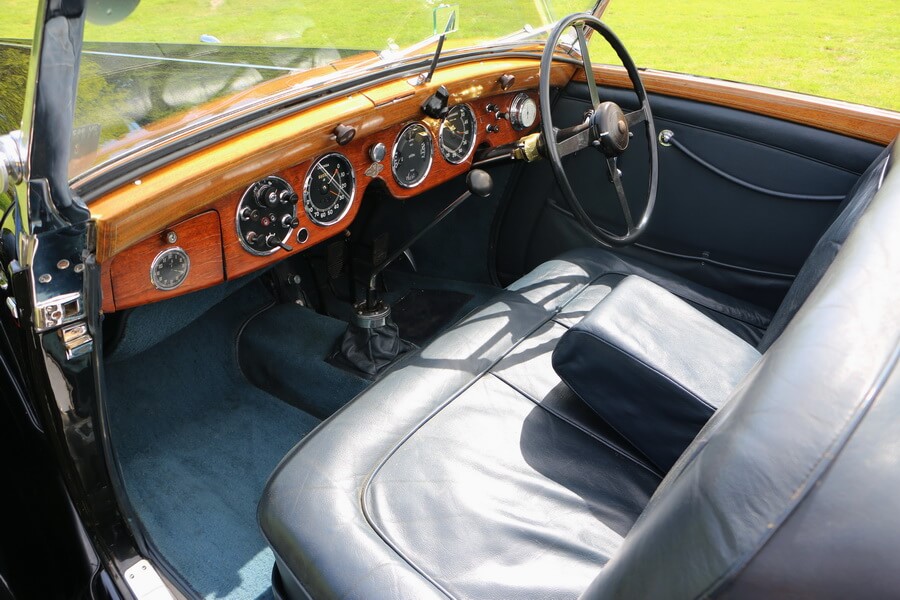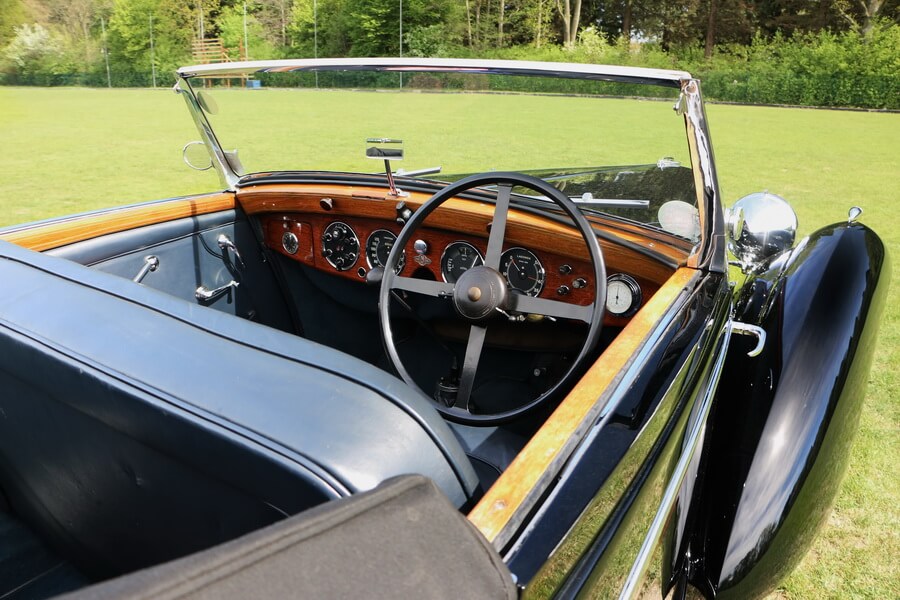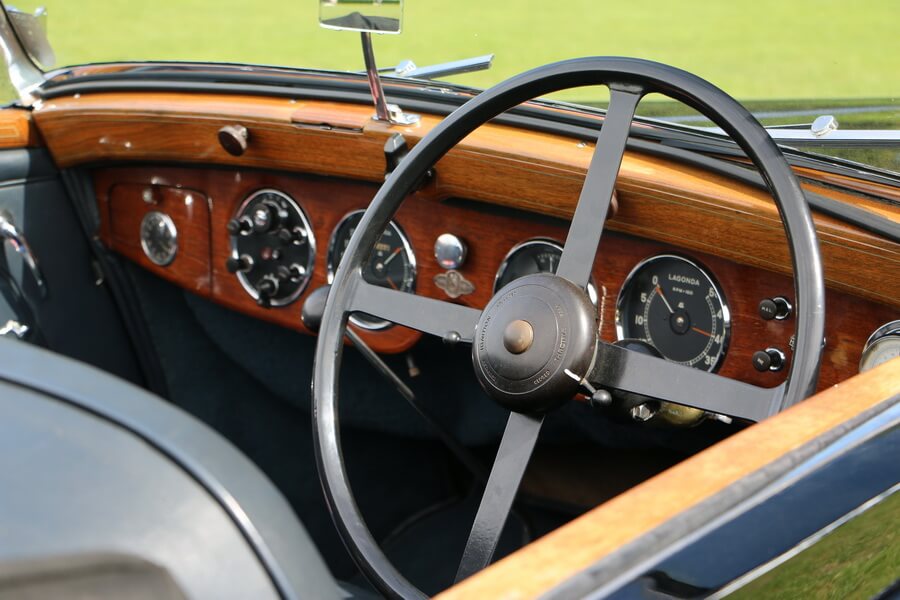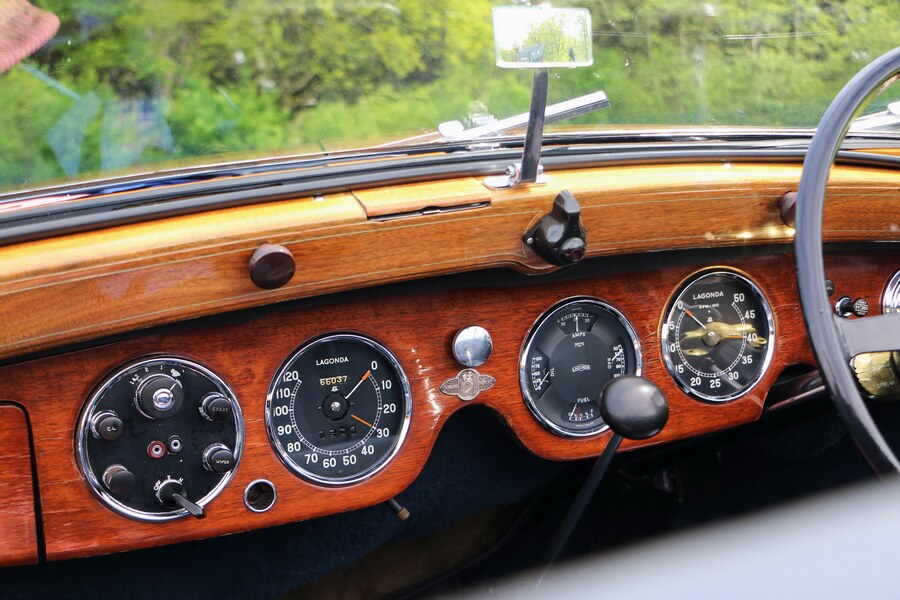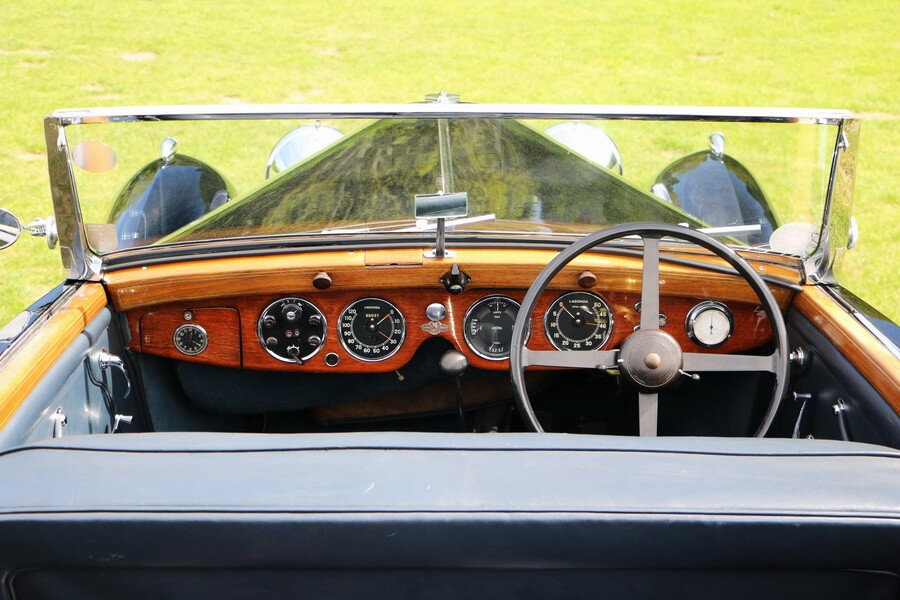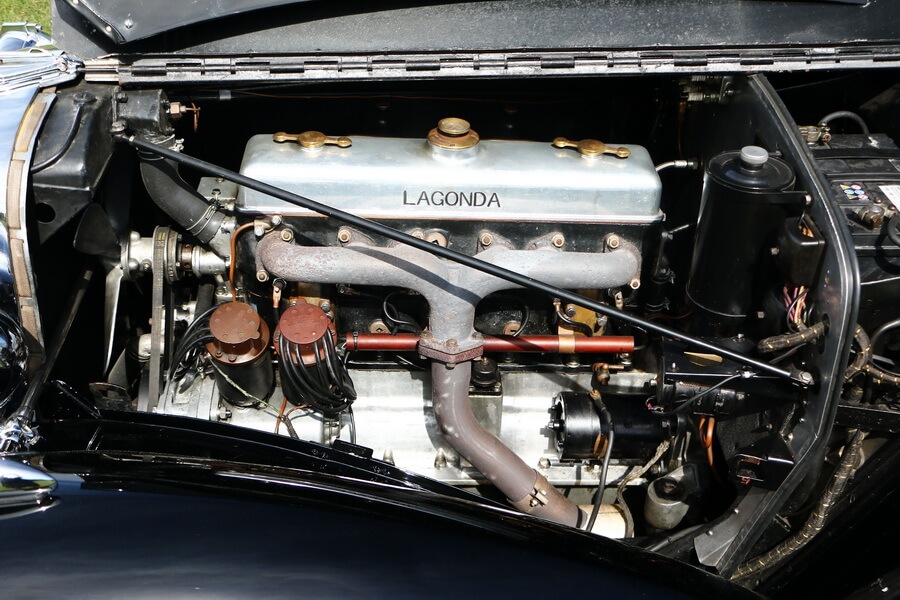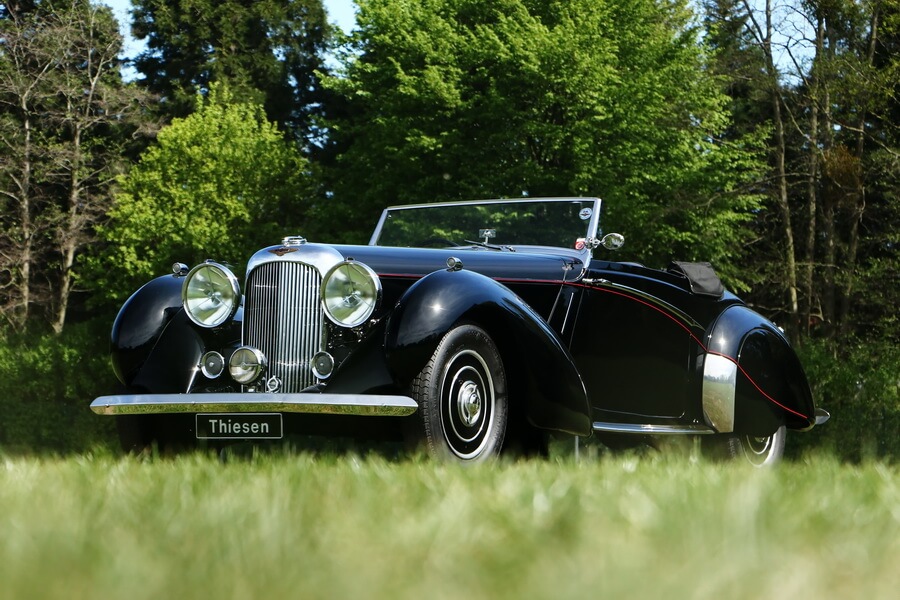Lagonda LG 6 Rapide
Highlights
Data & Facts
This Automobile
This Lagonda LG 6 Rapide was built in 1939 to the highest standards of British craftsmanship and is, in the eyes of many collectors and connoisseurs, the most beautiful pre-war English car ever - then as now. This example still has its original engine, has been well looked after over the past decades and is exceptionally well documented with many contemporary documents.
Its exclusivity makes it an entry ticket to all top-class classic car events worldwide. This is a rare opportunity to acquire the pinnacle of the English automobile industry.
Model History
In 1935, the new owner of Lagonda, Alan P. Good, took over the factory out of bankruptcy. He had also replaced W.O. Bentley from Rolls-Royce as technical director and poached a high-calibre team of engineers. His claim was: ‘We will build the best car in the world in two years.’ As a result, all Lagonda vehicles under the technical direction of W.O. Bentley, were progressively equipped with state-of-the-art technology. This included a hydraulic dual-circuit brake system, independent suspension, adjustable shock absorbers on the steering wheel and a fully synchronised four-speed manual gearbox.
A superior drive of the LG 6 model series was provided by the robust and proven Meadows six-cylinder engine with a displacement of 4.5 litres, which had already proven its qualities with a LeMans victory. It was then refined by W.O. Bentley, which included a flexible engine suspension. In order to ensure that the engines ran absolutely smoothly, the most modern processing machines of the time were used. And after 10 hours of operation on a test bench, the engine was dismantled again, measured and reassembled.
The LG 6 Rapide was built on a so-called short chassis and the engine was specified with a higher compression ratio of 7.5:1, which led to a remarkable output of 140 hp. The streamlined body of the Rapide is an unrivalled design by Frank Feeley, which was already regarded as one of the most beautiful English pre-war cars in its day.
This Automobile
This Lagonda LG 6 Rapide was built in 1939 to the highest standards of British craftsmanship and is, in the eyes of many collectors and connoisseurs, the most beautiful pre-war English car ever - then as now. This example still has its original engine, has been well looked after over the past decades and is exceptionally well documented with many contemporary documents.
Its exclusivity makes it an entry ticket to all top-class classic car events worldwide. This is a rare opportunity to acquire the pinnacle of the English automobile industry.
Model History
In 1935, the new owner of Lagonda, Alan P. Good, took over the factory out of bankruptcy. He had also replaced W.O. Bentley from Rolls-Royce as technical director and poached a high-calibre team of engineers. His claim was: ‘We will build the best car in the world in two years.’ As a result, all Lagonda vehicles under the technical direction of W.O. Bentley, were progressively equipped with state-of-the-art technology. This included a hydraulic dual-circuit brake system, independent suspension, adjustable shock absorbers on the steering wheel and a fully synchronised four-speed manual gearbox.
A superior drive of the LG 6 model series was provided by the robust and proven Meadows six-cylinder engine with a displacement of 4.5 litres, which had already proven its qualities with a LeMans victory. It was then refined by W.O. Bentley, which included a flexible engine suspension. In order to ensure that the engines ran absolutely smoothly, the most modern processing machines of the time were used. And after 10 hours of operation on a test bench, the engine was dismantled again, measured and reassembled.
The LG 6 Rapide was built on a so-called short chassis and the engine was specified with a higher compression ratio of 7.5:1, which led to a remarkable output of 140 hp. The streamlined body of the Rapide is an unrivalled design by Frank Feeley, which was already regarded as one of the most beautiful English pre-war cars in its day.

